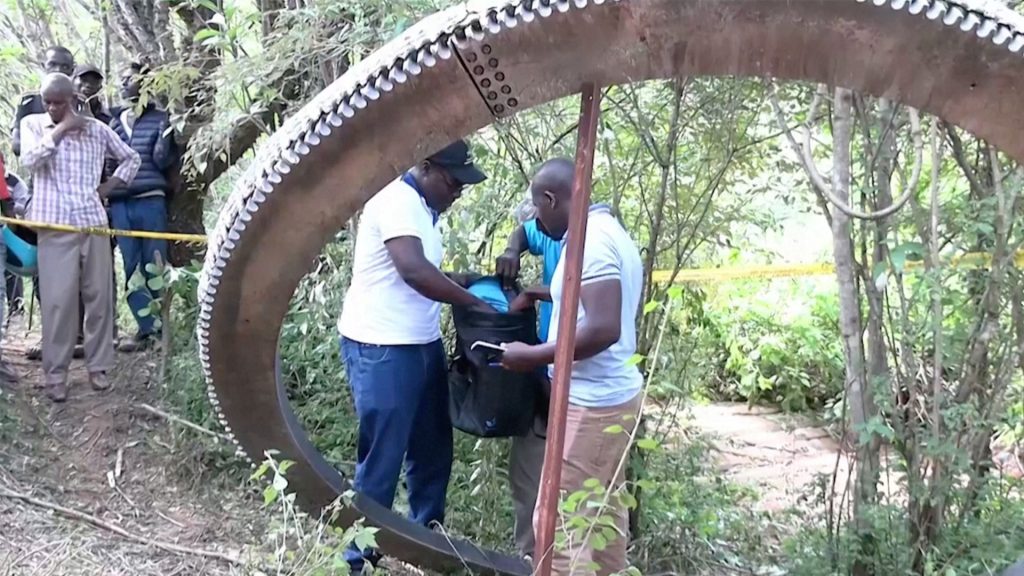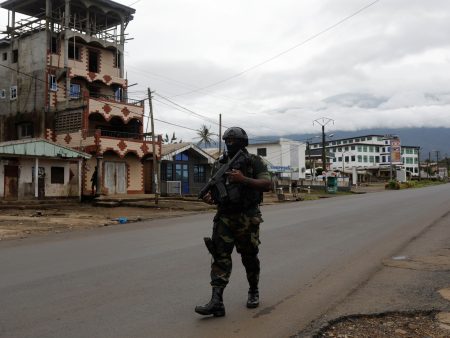The quiet tranquility of Mukuku village in Makueni County, Kenya, was shattered this week by the unexpected arrival of a 500-kilogram metallic object that plummeted from the sky, embedding itself in the earth. While the sudden appearance of such a large, unidentified object naturally sparked concern and speculation among villagers, the Kenya Space Agency (KSA) has offered an explanation, identifying the object as a separation ring originating from a rocket’s launch vehicle. These rings, integral components in the multi-stage process of launching rockets into space, are designed to detach from the main vehicle at specific altitudes, allowing different sections of the rocket to separate smoothly and efficiently as it ascends. The KSA’s preliminary assessment suggests that the ring poses no immediate threat to the safety or health of the residents of Mukuku village.
The incident, while startling, highlights the increasing frequency of space debris re-entering Earth’s atmosphere. As global space activity continues to expand, with both governmental and private entities launching an increasing number of satellites and spacecraft, the amount of debris orbiting our planet grows proportionally. This debris, ranging in size from tiny paint flecks to large spent rocket stages, poses a growing challenge for space agencies and satellite operators worldwide. While the vast majority of this debris burns up harmlessly upon re-entry, larger pieces, like the separation ring in Mukuku, can survive the atmospheric descent and reach the ground. The uncontrolled nature of these descents makes predicting their landing location difficult, underscoring the need for improved tracking and mitigation strategies.
The KSA’s prompt response in identifying and assessing the fallen object demonstrates the agency’s growing role in monitoring space-related activities within Kenya’s vicinity. By confirming the object’s origin and composition, the KSA has helped alleviate potential fears and misconceptions within the community. Their assertion that the object poses no immediate threat suggests a preliminary analysis indicating the absence of hazardous materials or radioactive components. However, further investigations will likely be undertaken to fully understand the object’s trajectory, its material composition, and any potential long-term environmental impact. This incident also presents an opportunity for Kenya to strengthen its space debris management protocols and contribute to international efforts in addressing the growing challenge of space debris mitigation.
The Mukuku incident serves as a tangible reminder of the interconnectedness between space activities and terrestrial life. While the benefits of space exploration and satellite technology are numerous, including advancements in communication, navigation, and Earth observation, the issue of space debris represents a significant environmental concern. The increasing density of objects in orbit raises the risk of collisions, which can create a cascade effect, generating more debris and further exacerbating the problem. This “Kessler Syndrome,” as it is known, has the potential to render certain orbital regions unusable, jeopardizing future space missions and impacting critical satellite services.
Addressing the space debris challenge requires a multifaceted approach involving international cooperation, technological innovation, and responsible space operations. Improvements in tracking and monitoring technologies are essential for identifying and cataloging debris objects, allowing for better predictions of their trajectories and potential re-entry points. Developing and implementing mitigation strategies, such as deorbiting defunct satellites and designing spacecraft with end-of-life disposal plans, is crucial to minimize the accumulation of debris in orbit. Furthermore, fostering international cooperation on space debris management, including the development of shared data repositories and collaborative mitigation efforts, is essential for addressing this global challenge effectively.
The incident in Mukuku village, while seemingly isolated, represents a larger narrative of humanity’s evolving relationship with space. As we continue to push the boundaries of space exploration and utilization, it becomes increasingly important to develop sustainable practices that prioritize the long-term safety and sustainability of the space environment. This includes not only mitigating the risks associated with space debris but also promoting responsible space operations that minimize environmental impact and ensure the peaceful and cooperative use of outer space for the benefit of all humankind. The fallen separation ring serves as a poignant reminder of the interconnectedness of our planet and the space beyond, urging us to develop a more comprehensive and sustainable approach to our space endeavors.










